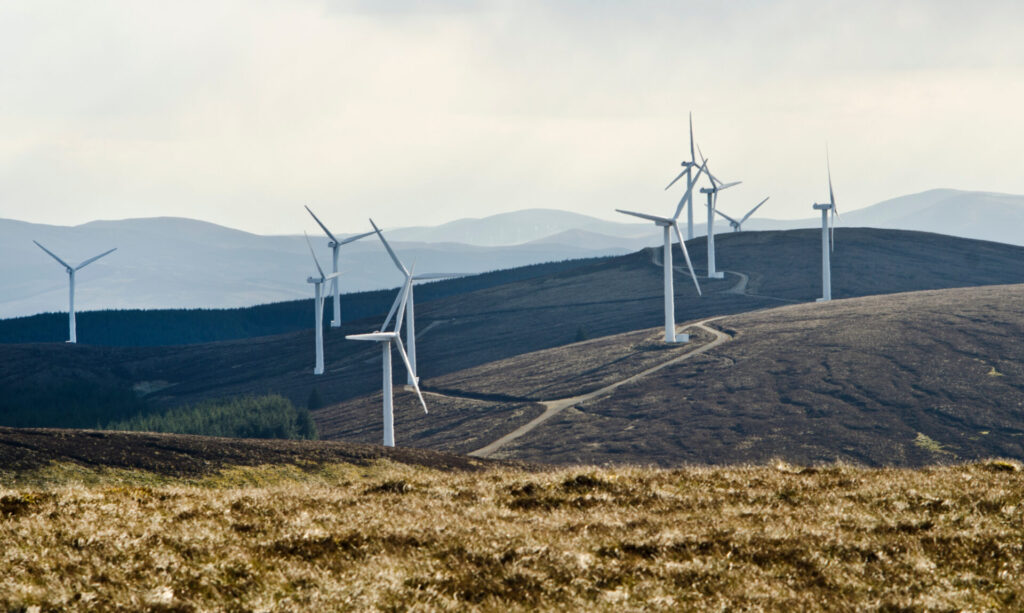The UK has taken a significant leap forward in its renewable energy ambitions with the completion of the Viking Wind Farm, now the nation’s most productive onshore wind facility. Located in the Shetland Islands, renowned for their high wind speeds, the Viking Wind Farm is strategically positioned to harness the full potential of this natural resource. The project, backed by a £1 billion investment from SSE, includes a pioneering 260-kilometer subsea transmission line that connects the wind farm to the mainland, ensuring that the generated power reaches the national grid.
Viking Wind Farm: Harnessing Shetland's Wind Power
The Viking Wind Farm is expected to generate enough electricity to power 500,000 homes annually. This contribution is critical as the UK continues to expand its renewable energy capacity, aiming to reduce carbon emissions and reliance on fossil fuels. The subsea cable ensures that the electricity generated in one of the UK’s remotest regions is efficiently transported to where it’s most needed.

Beyond its impressive energy generation capabilities, the Viking Wind Farm and the associated HVDC link have already had a substantial impact on the local Shetland economy and employment. At the height of construction, these initiatives created approximately 650 jobs and injected £125 million into the Shetland economy. Looking to the future, the Viking Wind Farm’s ongoing operations will sustain 35 permanent positions and are projected to contribute more than £70 million to the local economy throughout the wind farm’s operational lifespan.
Moreover, the Viking Community Fund, overseen by local representatives, is the largest single renewable project fund in Great Britain, with over £72 million allocated. This fund targets key areas prioritised by Shetland residents, including youth programs, housing, and transportation, and has already funded nearly 200 local initiatives. The fund not only boosts the local economy but also strengthens the social fabric of the community by addressing critical needs.
The UK's Renewable Energy Surge: A Broader Trend
The completion of the Viking Wind Farm coincides with a broader trend of rising renewable energy production across the UK, amidst the backlog. Recent data shows that clean electricity generation has reached unprecedented levels, with renewables now accounting for a significant share of the country’s energy mix. This surge is driven not only by wind but also by a growing contribution from solar power, as well as advancements in energy storage technologies that help stabilise the grid.
The rise of renewable energy in the UK is a clear indicator of the nation’s commitment to a sustainable future. It aligns with global efforts to combat climate change and underscores the importance of continued investment in clean energy infrastructure. In 2023, over 40% of electricity globally came from renewable sources, compared to 38% in 2022. Projects like the Viking Wind Farm demonstrate the potential of renewable energy to transform the energy landscape, providing reliable, sustainable power while creating jobs and boosting local economies.
The Viking Wind Farm as a Blueprint for the Future
Looking ahead, the success of the Viking Wind Farm sets a benchmark for future renewable projects, both in the UK and globally. It showcases the importance of leveraging natural resources effectively and the role of innovative infrastructure in making renewable energy a viable alternative to traditional power sources. The rise in renewable energy generation reflects the UK’s ongoing commitment to achieving its net-zero targets by 2050.
The UK’s renewable energy sector is on an upward trajectory, and the completion of the Viking Wind Farm is a testament to what can be achieved with vision, investment, and the right location. As more projects come online and the grid becomes greener, the UK is well on its way to meeting its environmental goals and leading the global transition to a low-carbon economy.






